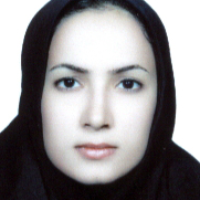Recovering Sasanian Textile Designs and Patterns from the Taq-e Bostan Reliefs
During the Sasanian era, the knitting craft and also the art of textile design had become very rich and well developed, but the textiles are not survived and are only discoverable by reliefs that are considered as profound artworks of that time. Sasanian reliefs are the valuable legacies which play an important role in validating the collected documents by archaeological and historical studies. Presenting a wide range of art, culture, political and religious aspects of the Sasanian empire, all of these reliefs spotlight the emperor and each one is engraved to represent a concept or a true event. They focus on the emperor and royal court members, therefore, we don’t know about the clothing of the major population of the society, nevertheless, it is a certain way to discover the Sasanian patterns and designs. So Taq-e Bostan is an important place, for it was located on the path of caravans (travelers) passing the silk road in the Sasanian era; it includes a large collection of reliefs. Many studies have been conducted on knitting in the Sasanian period, because of the importance of knitting for Sasanians of middle ages and its effect on the textile art of the three ancient continents. They have used historical texts and other artworks of the Sasanian period, and especially studied the clothing depicted in Taq-e Bostan. To discover the textile design in the Sasanian era, this study tries to answer the question: “How do the Sasanian textile patterns and designs could be discovered by the study of Taq-e Bostan’s reliefs based on principals of the traditional Persian arts?” This study adopts a historical analysis method and tries to study seven reliefs from the Taq-e Bostan, and rediscover the pattern and design of the usual textiles from the Sasanian period based on principals of the traditional Persian arts. The results indicate that these reliefs represent about 25 textile designs and 65 evident patterns, which show the richness of these resources. Also, being similar to some silk fabrics survived from the European churches, the patterns of Sasanian clothing and the sophisticated representation of clothing details in Taq-e Bostan’s reliefs show the importance of these reliefs for a rediscovery of the knitting craft and textile design. The results show that in addition to textiles without design and pattern, other types are divided based on the implementation of main design, including: translational symmetry (vagirei (repeating), frame types), asymmetrical and isolated (narrative) The frame-based textiles found in Taq-e Bostan include qab-qabi (repeating frames), and kheshti (brick-shaped), and their type is not clearly recognizable. This concise category is based on the legacy of traditional design which is illuminated by plant, animal, geometric, human, still life, and composite patterns.
Sasanian , Taq-e Bostan , Textile , Design , Pattern
- حق عضویت دریافتی صرف حمایت از نشریات عضو و نگهداری، تکمیل و توسعه مگیران میشود.
- پرداخت حق اشتراک و دانلود مقالات اجازه بازنشر آن در سایر رسانههای چاپی و دیجیتال را به کاربر نمیدهد.




